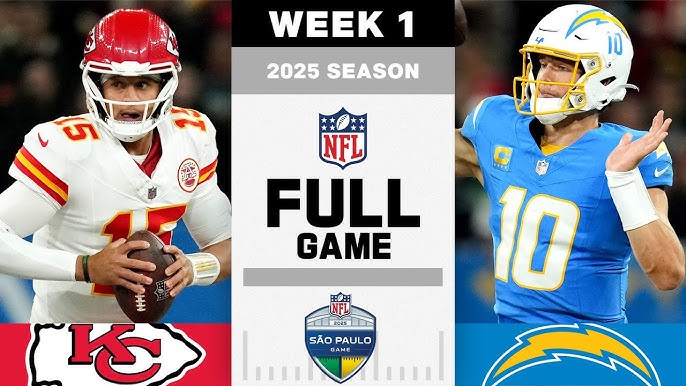Why YouTube’s NFL Stream Was Actually a Win
The real story behind those “disappointing” international numbers
YouTube’s first NFL stream is getting roasted for low global viewership, but the critics are missing the point entirely.
Media executive Hernan Lopez recently highlighted the puzzle: YouTube’s Chiefs vs. Chargers game drew 17 million viewers globally, but only 6% came from international markets. Compare that to Netflix’s Christmas Day NFL games, which pulled 30 million viewers with 14% international.
The takeaway floating around? YouTube’s algorithm failed. They should’ve used Netflix-style homepage curation to boost global numbers.
Here’s why that’s wrong.
It’s Apples to Oranges
Let’s start with context. YouTube streamed a Week 1 regular-season game on a Friday night — Patrick Mahomes and Justin Herbert brought star power, but zero playoff stakes.
Netflix? High-stakes Christmas Day matchups with postseason buzz, aired when families worldwide are planted in front of screens with nothing else to do.
Even the location tells the story. The game was in Brazil, where only 6% of the population follows the NFL. In the U.S.? Over 60%. YouTube was already playing with a stacked deck.
The Demographics Don’t Lie
Here’s the real kicker: audience fit.
YouTube’s 3 billion users skew young — over half are under 35, with 21.5% aged 25–34 globally. In the U.S., 93% of 18–29-year-olds use YouTube for gaming, vlogs, and Shorts. Average user age? Around 30–35.
Netflix subscribers trend older, with a median age of 35–44. About 75% of U.S. 18–34-year-olds subscribe, but so do 72% of 35–44 and 44% of 65+. That creates a more age-balanced audience that skews significantly older.
The NFL’s core fans average 55 years old.
Netflix’s audience is much closer to that sweet spot. YouTube’s isn’t, and that’s exactly why Netflix pulled better international numbers — their older, more linear TV-friendly viewers are primed for big NFL games.
YouTube Actually Nailed the Strategy
Don’t think YouTube phoned it in. They hosted the game in Brazil to tap a growing market, rolled out creator-driven “Watch With” streams in multiple languages (featuring IShowSpeed), and got a viral MrBeast promo.
But expecting YouTube to instantly convert its youth-driven, global user base into NFL fans is unrealistic. The NFL’s international footprint is still developing — last year’s São Paulo game drew 11.2 million local TV viewers, a fraction of U.S. numbers.
YouTube’s 17 million global viewers, including 1 million international, is actually solid for a Friday night stream in a sport that’s niche outside America.
Why Fighting the Algorithm Would Backfire
Could Netflix-style homepage curation have boosted YouTube’s numbers? Maybe. Netflix plastered those Christmas games front and center, likely pulling in casual viewers who wouldn’t have sought out football.
But here’s the thing: YouTube’s algorithm is its superpower. It serves up exactly what each user loves. Force a football game onto someone who prefers cooking tutorials or music videos, and you risk alienating the 18–34 crowd that makes YouTube what it is.
Heavy curation would make YouTube feel like cable TV — exactly what its core users are trying to escape.
The Long Game Wins
The smarter play? Double down on free streaming.
Free access lowers barriers in markets where NFL+ or DAZN subscriptions aren’t common. Combine that with creator partnerships and multilingual streams, and you build momentum over time without breaking YouTube’s core appeal.
That 6% international share isn’t a fumble — it’s a first down in a market where the NFL is just getting started.
Bottom line: Accessibility over algorithm manipulation will win globally. YouTube chose the right long-term strategy, even if the short-term optics look rough.
